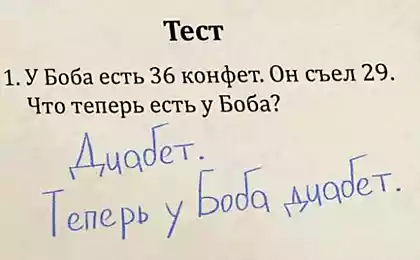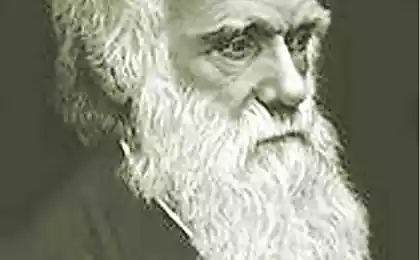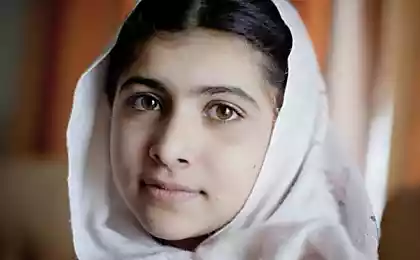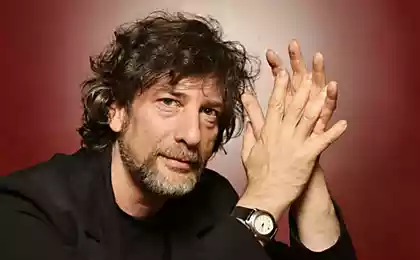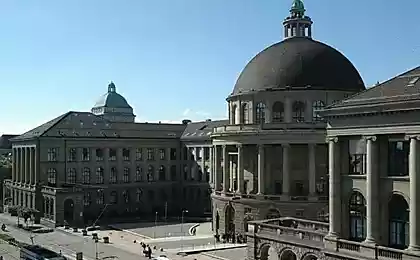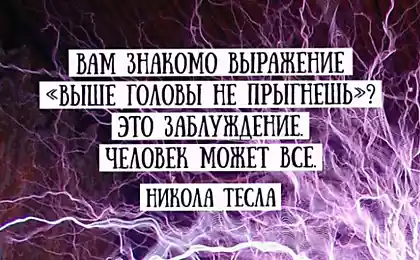492
10 books of the last 10 Nobel prize winners
1. Alice Munro — "The Forest"
Alice Munro of contemporary canadian writer, winner of the Nobel prize in literature 2013. The story of "the Forest", a deceptively simple form and embodiment, the first and one of the few of her short stories translated into Russian language.
The existence of Roy Fowler inextricably linked to land, its natural wealth and generosity. Slyvuschego in his native town, Logan (on) crank and eccentric, he feels himself far away from people, alone with the forest thicket, which for him and a source of sustenance, and a source of genuine inspiration. With the image of Roy Fowler's connected is extremely essential to national consciousness of Canada the theme of man's relationship with nature, today, as originally, full of highly dramatic.
Twenty one million seventy nine thousand four hundred thirty six
2. Mo Yan's "Big Breasts, wide ass"
The work of the famous Chinese writer of modern times Mo Yan (b. 1955) has received worldwide recognition, and in 2012 he was awarded the Nobel prize for literature.
This is undoubtedly one of the most creative and most prolific Chinese writers, the secret of whose success in the implementation of a gross and earthly into something refined, allowing you to experience the true delight in reading his works.
Mo Yan a Chinese writer so much so embodies in his work the tradition of the classical Chinese novel and in doing so skillfully, cleverly and seamlessly combines it with modern trends of world literature that as a result the world had a unique novelist — a unique and in regard to the selection of topics and manner of implementation of the author's intention.Mo Yan has mastered various forms of the narrative, imbuing them with original imagery and weaving them into the layers of mythological, sasawashi, Chinese folklore, mysticism with the addition of grotesque.
"Big Breasts, wide ass" is a great chronicle of Chinese history of the twentieth century. With all the horror and naturalism what is happening is a bright, elegant fresco, all characters which have symbolic meaning.
The story experienced by the people differs from official history. While literature is not history, it is an artistic way to explain some things."
3. Tumas Transtromer — "Poetry and prose"
Tumas Transtromer, the largest Swedish poet, Nobel prize laureate 2011, was born in Stockholm in 1931. In the book "Poetry and prose" represented everything that is written by the poet to date. In the poetry of Transtroemer a lot of "instant" realities, as if snatched from life.
Fragments of the seen world are not connected directly to each other, and seemingly quite randomly superimposed on top of the syntax. So the images that are obtained by the author and through it admitted the validity of the verse, get the character "pictures on top of pictures", the nature of the application. They "flattened", two — dimensional, and yet visible and bright. But this flatness is nothing but a new axis of measurement. The author speaks as free verse and metrical, often resorting to "solid forms". Many poems are published in Russian for the first time.
Thirty nine million six hundred seven thousand three hundred seventy two
4. Vargas Llosa — "Aunt Julia and the scribbler"
Mario Vargas Llosa, the world — famous Peruvian novelist, one of the creators of the "boom" of Latin American prose, winner of the Nobel prize for literature, awarded to him in 2010. Among a half dozen novels, created over half a century of literary work, stands out the book "Aunt Julia and the scribbler".
The story of a young journalist — a distant relative of Julia, in which he manages to fall in love, despite a fair difference in age, and a man named Pedro Camacho. Weird, tirelessly scribbling scripts radioserialov, replacing a country where there is no TV, "soap operas". He performed all the leading male role and also is the Director. Radioplay enjoyed extraordinary popularity, the station on duty the crowds of groupies, and all is good, but the reality of the fact is confused with fiction, and the plots suddenly start to appear strange turns.
5. Herta Müller — "Seesaw Breathing"
A novel by the German writer Herta müller, winner of the Nobel prize for literature in 2009, dedicated to the fate of Romanian Germans after the Second world war. This novel-memory, stunning in its depth and penetration.
6. Jean-Marie leclezio — "Diego and Frida"
French writer and traveler, Jean-Marie Gustave leclezio was awarded the Nobel prize for literature in 2008 as "an Explorer of human nature outside the dominant civilization inside her." Several years spent among the Indians of Central America, influenced, by his own admission, leclezio, for all his work and the way of thinking.
This book is a documentary biography. The author strictly adhered to the facts, but a story of life and love of two outstanding artists of the twentieth century, Diego Rivera and Frida Kahlo is more exciting and dramatic than any fiction.
Their attachment to each other, notwithstanding the striking dissimilarity of character, their creativity, in which they, each in their own way, were inspired by the ancient and unique culture of Mexico, historical events to which they were involved — all this can leave no one indifferent.
7. Doris Lessing "the Golden notebook"
The story of Anna Wolfe, a talented writer and a staunch feminist, which is teetering on the brink of madness, records all your thoughts and experiences in four colored notebooks: black, red, yellow and blue. But over time, there is also a fifth, Golden notebook, which records become the heroine of a real revelation and help her find a way out of the impasse.
Epoch-making novel, which is considered to be the best work of famous English writer Doris Lessing, winner of Nobel prize for 2007.
8. Orhan Pamuk — "House of silence"
Orhan Pamuk, a recognized classic of the Turkish literature Nobel laureate 2006, is a virtuoso stylist and singer of unrequited love, love and read all over the world. Like his native city of Istanbul, Pamuk belongs to both Europe and Asia, dividing their sympathy between traditional Eastern values and acquired later by Western ideals.
Among the most famous works of Pamuk's "Cevdet Bey and his sons", "my name is Red, Museum of Innocence," "White castle", "New life", "Snow" and others. "House of silence" — the second novel of the famous writer. It's a sad family Saga, the history of several generations of an ancient family. In the country there is insecurity: in the 1980-ies Turkey was on the brink of civil war, and five very different characters meet in their childhood home to recall the happy past, discuss torn apart by extremist groups present their country, and anxiously look in a vague and uncertain future.
9. Harold Pinter's "The Dwarfs"
Harold Pinter, Nobel laureate 2005, is one of the most significant playwrights of our days.
The novel "the Dwarf" is the only prose work of the master during the long years of fruitful literary activity. This is the story of a complex relationship between three young men and a girl living in post-war London. Their strange, sometimes something devastating for each friendship due to the restrictions and limits imposed on human life and sexuality, intimate relationships and accepted morality.
"Dwarfs" is written unexpectedly easy, elegant and exciting, this novel reveals another facet of the talent of the writer and playwright whose works have largely shaped the tastes and influenced the lives of millions of readers around the world.
10. Elfriede Jelinek — "The Pianist"
Pianist Erika Kohut over thirty. Her relationship with music, Vysocanska out all the juices, with a domineering mother, whose hopes for a career she did not meet with a student of the Moscow Conservatoire, where she works as a teacher, — all permeated with violence and aggression. It turns out that love may take the form of cruel perversions, and sophisticated musical culture stems from the same mental anomalies, obsessions and phobias, and a quiet obsession with the most trivial Everyman modern prosperous society.
The novel "the Pianist" (1983), who had a sensational success in Europe and the United States, is a landmark work of modern literature. The most famous modern writer of Europe, the infamous Nobel laureate 2004 Elfriede Jelinek throws the world works.
The film adaptation of this book, reinterpreted by renowned Director Michael Haneke was awarded the Grand Prix at the Cannes film festival 2001 and the unofficial status of "the first significant work of art for the new century". published
P. S. And remember, only by changing their consumption — together we change the world! © Join us at Facebook , Vkontakte, Odnoklassniki
Source: vk.com/1poetry?w=wall-38683579_105688
Alice Munro of contemporary canadian writer, winner of the Nobel prize in literature 2013. The story of "the Forest", a deceptively simple form and embodiment, the first and one of the few of her short stories translated into Russian language.
The existence of Roy Fowler inextricably linked to land, its natural wealth and generosity. Slyvuschego in his native town, Logan (on) crank and eccentric, he feels himself far away from people, alone with the forest thicket, which for him and a source of sustenance, and a source of genuine inspiration. With the image of Roy Fowler's connected is extremely essential to national consciousness of Canada the theme of man's relationship with nature, today, as originally, full of highly dramatic.
Twenty one million seventy nine thousand four hundred thirty six
2. Mo Yan's "Big Breasts, wide ass"
The work of the famous Chinese writer of modern times Mo Yan (b. 1955) has received worldwide recognition, and in 2012 he was awarded the Nobel prize for literature.
This is undoubtedly one of the most creative and most prolific Chinese writers, the secret of whose success in the implementation of a gross and earthly into something refined, allowing you to experience the true delight in reading his works.
Mo Yan a Chinese writer so much so embodies in his work the tradition of the classical Chinese novel and in doing so skillfully, cleverly and seamlessly combines it with modern trends of world literature that as a result the world had a unique novelist — a unique and in regard to the selection of topics and manner of implementation of the author's intention.Mo Yan has mastered various forms of the narrative, imbuing them with original imagery and weaving them into the layers of mythological, sasawashi, Chinese folklore, mysticism with the addition of grotesque.
"Big Breasts, wide ass" is a great chronicle of Chinese history of the twentieth century. With all the horror and naturalism what is happening is a bright, elegant fresco, all characters which have symbolic meaning.
The story experienced by the people differs from official history. While literature is not history, it is an artistic way to explain some things."
3. Tumas Transtromer — "Poetry and prose"
Tumas Transtromer, the largest Swedish poet, Nobel prize laureate 2011, was born in Stockholm in 1931. In the book "Poetry and prose" represented everything that is written by the poet to date. In the poetry of Transtroemer a lot of "instant" realities, as if snatched from life.
Fragments of the seen world are not connected directly to each other, and seemingly quite randomly superimposed on top of the syntax. So the images that are obtained by the author and through it admitted the validity of the verse, get the character "pictures on top of pictures", the nature of the application. They "flattened", two — dimensional, and yet visible and bright. But this flatness is nothing but a new axis of measurement. The author speaks as free verse and metrical, often resorting to "solid forms". Many poems are published in Russian for the first time.
Thirty nine million six hundred seven thousand three hundred seventy two
4. Vargas Llosa — "Aunt Julia and the scribbler"
Mario Vargas Llosa, the world — famous Peruvian novelist, one of the creators of the "boom" of Latin American prose, winner of the Nobel prize for literature, awarded to him in 2010. Among a half dozen novels, created over half a century of literary work, stands out the book "Aunt Julia and the scribbler".
The story of a young journalist — a distant relative of Julia, in which he manages to fall in love, despite a fair difference in age, and a man named Pedro Camacho. Weird, tirelessly scribbling scripts radioserialov, replacing a country where there is no TV, "soap operas". He performed all the leading male role and also is the Director. Radioplay enjoyed extraordinary popularity, the station on duty the crowds of groupies, and all is good, but the reality of the fact is confused with fiction, and the plots suddenly start to appear strange turns.
5. Herta Müller — "Seesaw Breathing"
A novel by the German writer Herta müller, winner of the Nobel prize for literature in 2009, dedicated to the fate of Romanian Germans after the Second world war. This novel-memory, stunning in its depth and penetration.
6. Jean-Marie leclezio — "Diego and Frida"
French writer and traveler, Jean-Marie Gustave leclezio was awarded the Nobel prize for literature in 2008 as "an Explorer of human nature outside the dominant civilization inside her." Several years spent among the Indians of Central America, influenced, by his own admission, leclezio, for all his work and the way of thinking.
This book is a documentary biography. The author strictly adhered to the facts, but a story of life and love of two outstanding artists of the twentieth century, Diego Rivera and Frida Kahlo is more exciting and dramatic than any fiction.
Their attachment to each other, notwithstanding the striking dissimilarity of character, their creativity, in which they, each in their own way, were inspired by the ancient and unique culture of Mexico, historical events to which they were involved — all this can leave no one indifferent.
7. Doris Lessing "the Golden notebook"
The story of Anna Wolfe, a talented writer and a staunch feminist, which is teetering on the brink of madness, records all your thoughts and experiences in four colored notebooks: black, red, yellow and blue. But over time, there is also a fifth, Golden notebook, which records become the heroine of a real revelation and help her find a way out of the impasse.
Epoch-making novel, which is considered to be the best work of famous English writer Doris Lessing, winner of Nobel prize for 2007.
8. Orhan Pamuk — "House of silence"
Orhan Pamuk, a recognized classic of the Turkish literature Nobel laureate 2006, is a virtuoso stylist and singer of unrequited love, love and read all over the world. Like his native city of Istanbul, Pamuk belongs to both Europe and Asia, dividing their sympathy between traditional Eastern values and acquired later by Western ideals.
Among the most famous works of Pamuk's "Cevdet Bey and his sons", "my name is Red, Museum of Innocence," "White castle", "New life", "Snow" and others. "House of silence" — the second novel of the famous writer. It's a sad family Saga, the history of several generations of an ancient family. In the country there is insecurity: in the 1980-ies Turkey was on the brink of civil war, and five very different characters meet in their childhood home to recall the happy past, discuss torn apart by extremist groups present their country, and anxiously look in a vague and uncertain future.
9. Harold Pinter's "The Dwarfs"
Harold Pinter, Nobel laureate 2005, is one of the most significant playwrights of our days.
The novel "the Dwarf" is the only prose work of the master during the long years of fruitful literary activity. This is the story of a complex relationship between three young men and a girl living in post-war London. Their strange, sometimes something devastating for each friendship due to the restrictions and limits imposed on human life and sexuality, intimate relationships and accepted morality.
"Dwarfs" is written unexpectedly easy, elegant and exciting, this novel reveals another facet of the talent of the writer and playwright whose works have largely shaped the tastes and influenced the lives of millions of readers around the world.
10. Elfriede Jelinek — "The Pianist"
Pianist Erika Kohut over thirty. Her relationship with music, Vysocanska out all the juices, with a domineering mother, whose hopes for a career she did not meet with a student of the Moscow Conservatoire, where she works as a teacher, — all permeated with violence and aggression. It turns out that love may take the form of cruel perversions, and sophisticated musical culture stems from the same mental anomalies, obsessions and phobias, and a quiet obsession with the most trivial Everyman modern prosperous society.
The novel "the Pianist" (1983), who had a sensational success in Europe and the United States, is a landmark work of modern literature. The most famous modern writer of Europe, the infamous Nobel laureate 2004 Elfriede Jelinek throws the world works.
The film adaptation of this book, reinterpreted by renowned Director Michael Haneke was awarded the Grand Prix at the Cannes film festival 2001 and the unofficial status of "the first significant work of art for the new century". published
P. S. And remember, only by changing their consumption — together we change the world! © Join us at Facebook , Vkontakte, Odnoklassniki
Source: vk.com/1poetry?w=wall-38683579_105688

